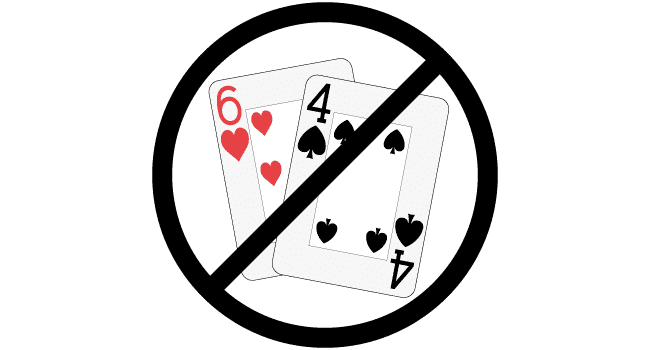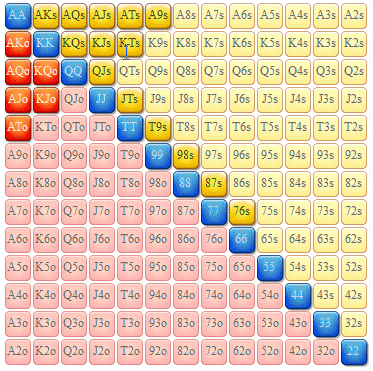The successes of national chain restaurants like McDonalds, Chili’s, and Chipotle has always fascinated me. These places don’t always have the highest quality food. Often they aren’t even that cheap compared to independent competitors. There is one thing that they have, however, that is clearly one of their keys to success.
A burrito from a Miami Chipotle will be nearly identical to one from a Seattle Chipotle. It’s uncanny. Everything is the same. The ingredients, the texture, the flavor, the portion size—it’s all nearly identical from one side of the country to the other.

It’s a bit of a modern marvel. More than that, the consistency is absolutely critical to the success of these national chains. I didn’t realize how important it was until one day I ate at a national restaurant that got it wrong. The sauce on my internationally-standardized Chinese-inspired stir fry dish was off. It was too sweet, too thick. It didn’t taste bad, it just wasn’t what it was supposed to be.
I didn’t finish it. Even though it tasted fine, I couldn’t help but wonder why it wasn’t consistent. Did a rat fall into the pot while they were making this batch? Clearly something had gone wrong—and once I acknowledged that there was something wrong with my food, I couldn’t eat another bite.
I believe consistency is one of my greatest strengths as a poker player. I may not be the most creative or brilliant player. I may not see every last opportunity to squeeze profit from my opponents. I may make a few fundamental errors in certain spots.
But I never, ever blow up. I hear people talk about how they made a mistake in one hand, and then that led to them spewing off three stacks. They decided on a whim to 3-bet preflop with 6-4 offsuit and then followed it up with a bunch of barrels. It didn’t work.
I literally never do this. It’s because I never, ever reraise with 6-4 offsuit. I simply don’t do it. Ever. If I’m not in the blinds, 6-4 offsuit is always a fold preflop. I don’t care what the action is in front of me or how bad my opponents are or what my image is or anything. I fold.

I play a nearly completely rote preflop strategy. I don’t adjust it for player or game type. (Stack sizes, of course, I have to adjust for.) I never ever throw in a “what the heck” call or raise. Ever. I play certain hands from certain positions against certain action, and I play no others.
This flies in the face of how many accomplished poker players approach the game. Everything depends, don’t you know?
Here’s the thing. I’ve played the “everything depends, adjust to the situation” way for many years. And after long deliberation, I’ve abandoned it for this nearly rote preflop strategy. In my opinion, my way gives me two huge advantages that I don’t think I can make up for by squeezing a little value out of a few extra hands.
They both come down to consistency. First, as I said before, I tilt-spew far less than I used to. I simply don’t enter hands in the questionable situations that most often go all wrong.
Second—and I believe this is an extremely underrated, but very powerful virtue—I know roughly what my hand range looks like at every point after the flop because, for any given preflop position and action, I always begin with the same set of hands. This means that I make much quicker and sharper decisions after the flop. The logic of most turn and river decisions falls quickly out when I clearly understand the contours of my hand range.
 When your opponents are passive, this understanding isn’t so important. But against aggressive players who challenge you after the flop, it’s vital to understand how your range behaves and where your particular hand falls within your range.
When your opponents are passive, this understanding isn’t so important. But against aggressive players who challenge you after the flop, it’s vital to understand how your range behaves and where your particular hand falls within your range.
When someone bets at me and I’m thinking about taking one off either with a draw or a made hand, I first try to place my hand by percentile within my range. Is this hand that I have a 70th percentile hand for my range? A 40th percentile? A 10th percentile? It is difficult to estimate these percentiles for a fixed hand range, because subtleties of board texture can move hands around quite a bit. It is—for me at least—essentially impossible to estimate my percentiles if every hand I’m playing an entirely new hand range because I’m reraising 6-4 offsuit on a whim.
I have a lot of clarity about my play on the turn and river now. I rarely feel like I’ve been outplayed. It’s easy for me to call with a made hand on the turn and then fold it to a river bet, because I have a fair idea of where the hand falls within my total range. I never regret folding a 20th percentile made hand to a pot-sized bet, even if my opponent shows the bluff. Because I know that just as often in that same spot, I’ll have a 50th percentile hand and make the call.
And if I’m thinking about bluffing, I can rattle off in rough order of preference the hands I can have that I would like to bluff with. I can gauge value betting frequencies and match them to my bluffs. Or I can expect my opponent to fold too much and therefore bluff everything without sufficient showdown value.
But once I allow a slew of hands I’m not used to holding into the mix—even if and perhaps especially if I play these hands only occasionally—it’s nearly impossible for me to feel confident about a bluff. Sure, the hand had no showdown value, but without the context of a consistent hand range, I could be overbluffing and not know it.
So that’s how I do it. I try to keep my play as consistent as possible preflop and also to a lesser extent on the flop. These streets I play nearly by rote—making the same plays against nearly all opponent types. I shift more toward “Playing The Player” on the turn and river.
It’s possible I’m giving up a little value by playing this way, but I think the sharpness it adds to my postflop play more than compensates me.
Chipotle doesn’t make the best burrito in the world. It isn’t the best value either. But day in and day out, it’s good. It’s dependable. And Chipotle also makes a whole lot of money.

great article, thanks a lot Ed. Your books, articles, videos helped me to improve my poker game.
Good stuff. A lot to think about. Thanks for sharing.
In a recent video, I forget which, Ed mentions an article that describes his standard opening range and that this range really doesn’t change. I cannot seem to find this article. Could you give me a link please?
Rob, doesn’t he just show you his opening ranges in one of the videos?
Very good article , just what I needed before I start my session tonight ….Thanks